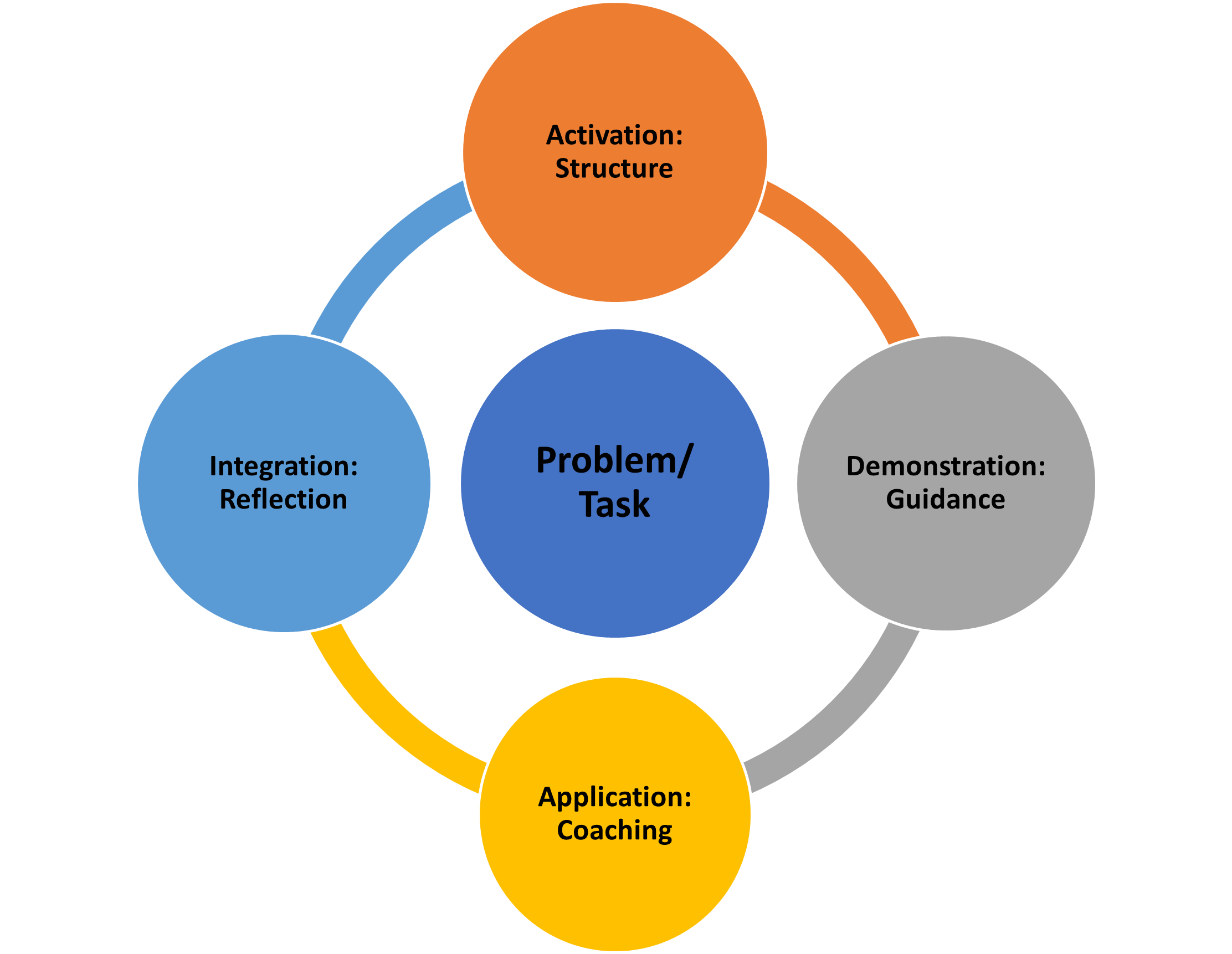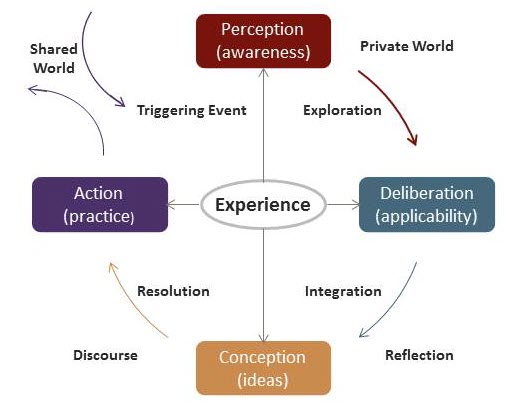Unit 1 Building and Sustaining Community Online
Cognitive Presence
Cognitive Presence is the extent to which learners are able to construct and confirm meaning through sustained reflection and discourse (Garrison, Anderson, & Archer, 2000). Cognitive Presence is the central thinking and meaning-making aspects of this presence, the “Inquiry” part of the Community of Inquiry.
Cognitive presence is central to successful student learning. The quality of cognitive presence reflects the quality and quantity of critical thinking, collaborative problem-solving, and construction of meaning occurring in student ↔ student and student ↔ instructor interactions. You can model and support cognitive presence in your interactions with students in discussions, assignment feedback, and other communications.
Cognitive presence is tied to how you plan the structure of your teaching. And how you structure your teaching is connected to the kinds of pedagogies you believe in, what pedagogies are typical of your teaching discipline/subject area, and what approaches you might use to match with a particular outcome. Just as we plan how we structure our lessons for in-person teaching, we do the same for online teaching.
If you have already taken the Instructional Skills Workshop, the BOPPPS model[1] will be familiar to you. The BOPPPS is one example of an instructional model for structuring lessons amongst various others.
However, there is an underlying structure to most well-known instructional models, and it has four key phases: discovery, exploration (divergent thinking), integration (convergent thinking), and resolution.
Reviewing Instructional Models
Let’s take a moment to review models of structuring learning.
Models are tools to help you plan your instruction and their benefit is to ensure use of best practices that will support and facilitate student learning.
The instructional model illustrated below gives the main phases in instruction, that provide optimal learning:

(based on Merrill, D.(2009), First Principles of Instruction, in Riegeluth and Carr-Chellman, Instructional Design Theories & Models, pg.52)
Each phase and the roles of the instructor and learner in each stage:
Task-Centred
In general, learning is promoted when learners engage in task-centred or problem-centred instructional strategies. When planning your lessons, think about what it is that learners will be engaging with. It could be a thinking-task (such ‘identifying signs of hypoxia’) or a doing-task (such as ‘cut low carbon steel using freehand techniques’). This task, no matter how simple or complex, is the centre of the instructional cycle and grounds the learning.
Activation/Triggering Event
The purpose of this phase is the activation of background knowledge for the learner, where the instructor creates the structure. Learners come with pre-existing ideas and mental models, and they may not be correct or very sophisticated or complex. A well-designed lesson will prompt learners to access their prior knowledge, which literally means digging around in that part of their brains where they are holding onto it. In asking learners to do this, the instructor is facilitating the learner’s development of knowledge structures.
Demonstration
The purpose of this phase is demonstration of an outcome to the learner where the instructor provides guidance. Learning is promoted when learners observe a demonstration and where learners have the opportunity to apply the new knowledge, skill, or behaviour that is the goal of the lesson. Sometimes the task requires the instructor to demonstrate before learners have the opportunity to apply it, while in other situations, it might be more meaningful for the learners if they attempt to apply at the same time or make an attempt to apply the skill before the instructor provides a demonstration.
Application
The purpose of this phase is application by the learner, where the instructor provides coaching. Learners need time to apply their learning and practice. The instructor’s role in all cases is to sequence tasks appropriately to create successful learning in stages and to provide guidance and coaching to learners.
Integration
The purpose of this phase is integration by the learner, where the instructor promotes reflection. Learning is promoted when learners integrate their new knowledge into their everyday world, their already established practice, and their pre-existing understanding of the concepts. What this means is a moment to step back from focusing on the learning task or problem, and reflect on how the specific task fits into the larger understanding. Doing so greatly facilitates our retention of learning. The instructor’s role is to promote and model reflection.
Cognitive presence in the context of the specific teaching methods that we focus on in this course, direct teaching and learning through discussion, is based on the iterative relationship between personal understanding and shared dialogue

License: Cognitive Presence[2] by IU-Teach Online[3] licenced under CC BY NC SA
The diagram above shows a model that integrates these two aspects in a cycle, beginning with a question or puzzle – called a triggering event – or just a general awareness that something is not making sense. The learner then explores the available information and alternatives to make sense of the problem and connects this new information to previously learned concepts. Finally, the learner takes action to solve the problem or answer the question based on their newly integrated understanding.

